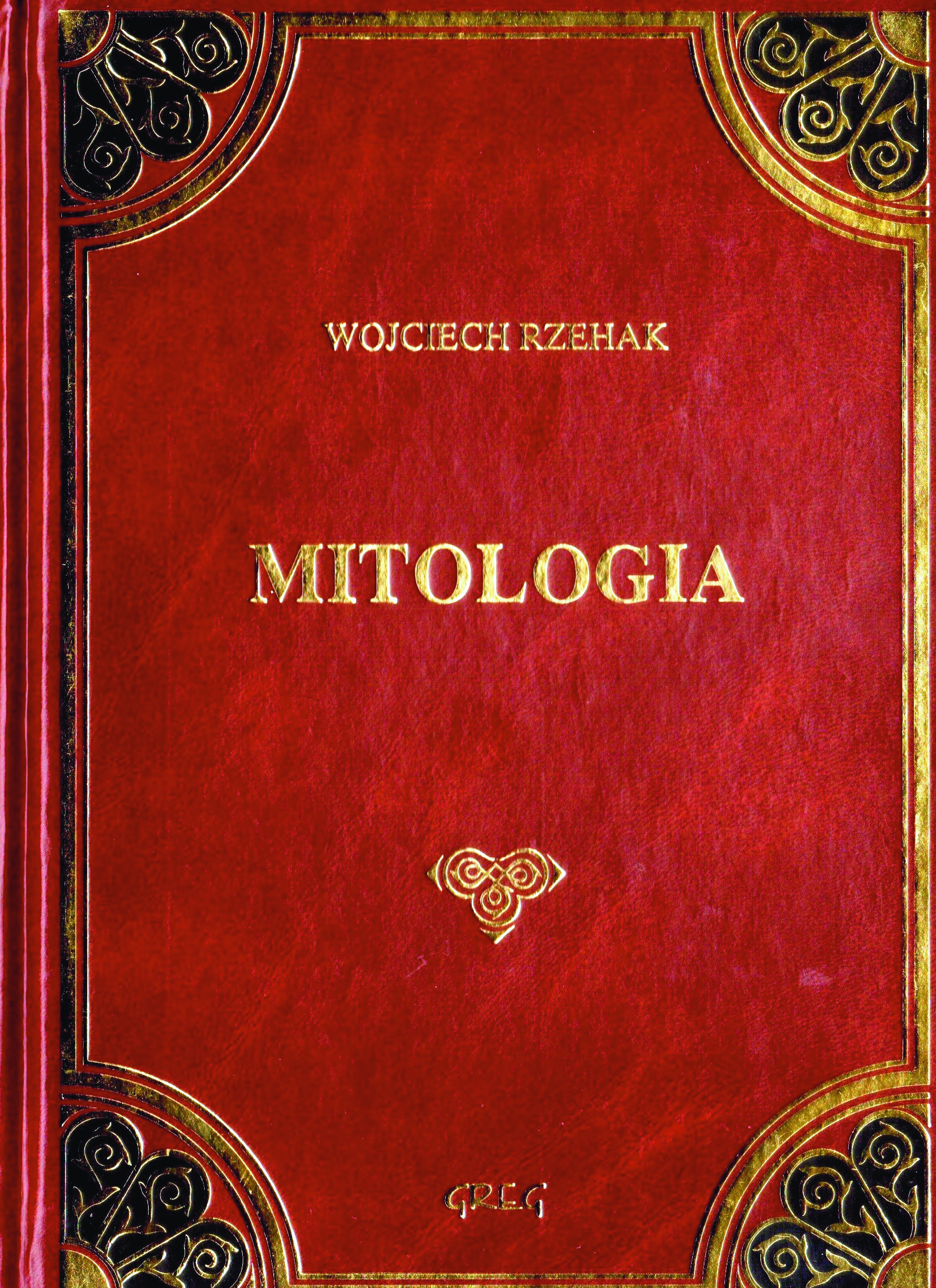Title of the work
Country of the First Edition
Country/countries of popularity
Original Language
First Edition Date
First Edition Details
Wojciech Rzehak, Mitologia. Wierzenia Greków i Rzymian, ill. Jacek Siudak. Kraków: GREG, 2004, 247 pp.
ISBN
Genre
Instructional and educational works
Myths
Target Audience
Children (12–18)
Cover

Courtesy of Wydawnictwo GREG, the publisher.
Author of the Entry:
Summary: Karolina Zieleniewska, University of Warsaw, k.zieleniewska@hotmail.com
Summary, Analysis: Hanna Paulouskaya, University of Warsaw, hannapa@al.uw.edu.pl
Peer-reviewer of the Entry:
Elżbieta Olechowska, University of Warsaw, elzbieta.olechowska@gmail.com
Katarzyna Marciniak, University of Warsaw, kamar@al.uw.edu.pl

Photograph courtesy of the Author.
Wojciech Rzehak
, b. 1967
(Author)
Wojciech Rzehak was born in Kraków. He graduated from the Jagiellonian University in 1992, having studied Polish philology. In the 1990s, he worked as a Polish teacher at August Witkowski High School in Kraków. Since 2000 he has worked as deputy director at Private High School No. 8 and at Mikołaj Rej Private High School No. 7 (where he teaches Polish) also in Kraków.
He has collaborated with the District Examination Board in Kraków – since 2001; with the Central Examination Board – since 2005, and with the Centre for Educational Diagnostics of the educational publishing house, Wydawnictwa Szkolne i Pedagogiczne [School and Educational Publishing Houses] – since 2012.
Author of many textbooks, e.g., Język polski. Vademecum [Polish Language. Vademecum], 1998; Mitologia. Wierzenia Greków i Rzymian [Mythology. Beliefs of the Greeks and Romans], 2007; Antologia poezji staropolskiej z opracowaniem [Anthology of Old Polish Poetry with a Commentary], 2011.
Source:
Bio based on the material kindly provided by the Author.
Bio prepared by Karolina Zieleniewska, University of Warsaw, k.zieleniewska@hotmail.com

Jacek Siudak
, 1953 - 2021
(Illustrator)
Jacek Siudak lived and studied in Kraków, graduating from the Jan Matejko Academy of Fine Arts. He often cooperated with Wojciech Rzehak, publishing texts by e.g., Bruno Schulz (2002), Jan Kochanowski (2008), and Voltaire (2016). He also authored and illustrated a book about love in Eden Raj, czyli Pierwsza miłość (2011) [Paradise, or First Love].
Bio based on the Facebook profile of the author and library catalogues.
Bio prepared by Hanna Paulouskaya, University of Warsaw, hannapa@al.uw.edu.pl
Summary
A previous version of the entry was published in: Katarzyna Marciniak, Elżbieta Olechowska, Joanna Kłos, Michał Kucharski (eds.), Polish Literature for Children & Young Adults Inspired by Classical Antiquity: A Catalogue, Faculty of “Artes Liberales”, Warsaw: University of Warsaw, 2013, 444 pp.
The mythology includes myths of the ancient Greeks and Romans. The book is formally divided into two parts: 1) Greek myths and 2) Roman myths; however, the first part is much larger and divided into eleven chapters (pp. 5–190), the second part consists of only two chapters (pp. 193–209) and is referred to in the table of contents (p. 246) as the annex, most likely by mistake. This is followed by a part called “Study”, containing reflections on the essence of myths, “Interpretations of selected myths”, mythological inspirations in art and literature, and indexes of myths, characters, places, holidays, epithets, and terms.
The Greek part includes cosmogonic myths and myths about individual deities and heroes, including Theban myths, the Trojan War, and the Argonauts’ expedition. The chapters of the Roman section are called “Roman deities” and “Aeneas’ wandering and the founding of Rome”. Both parts present the most popular stories about ancient heroes and mythological gods. The descriptions of all the deities include their epithets and dedicated rituals. There are also inserts in the text labelled “Worth knowing”. These include interesting facts about mythology and its influence on culture, especially Polish culture.
The book is designed as a textbook, complete with tables, diagrams, charts, genealogical trees, and humorous comic strip-style illustrations. Keywords in the text are bolded; some of them are even framed. The layout is clear and reader-friendly. The text includes fictional dialogues and is written using simple terms. It includes more mature topics such as Zeus’ adultery or Hercules’ murder of his children (p. 26), but they are rather briefly mentioned as if addressing mature readers. All stories show the ancient world in a way attractive to a young audience.
Analysis
This is a condensed description of the most important Greek and Roman myths, logically structured, concise and complete. The existence of different versions of myths is mentioned, but usually, only one “main” version of the myth is chosen for presentation. The sources of the myths are not given in the main text. Some of them (such as poems of Hesiod or Ovid) are mentioned in the appendices and inserts labelled as “Worth knowing”.
The distinction between myths and the Bible is emphasized in the “Study” part, where it is stressed that “mythology is a product of human imagination. […] The Bible is the work of God, who spoke through the prophets.” (p. 220). This position reflects the dominance of Christian values in the Polish school system. The author also explains that Greek and Roman mythology is not equivalent to Greek and Roman religion and is primarily a body of stories and literary texts (pp. 214–216).
The chapter “Interpretations of Selected Myths” discusses “the beginning of the world” from Chaos (pp. 217–218), “the origin of man” (pp. 218–219) – the five successive ages of humanity in the descending order of perfection, from the Golden to the Iron Age. It follows the story of “the creation of man” with the myth of Prometheus (p. 219) and “the beginning of the world in mythology and in the Bible – a comparison” (pp. 219–220). These selected myths of origin are compared to the biblical version of the origins of the world. This comparison clearly separates the Judeo-Christian truth of the Bible from the classical stories, and highlights the difference between monotheism and polytheism. At the same time, the author emphasizes that, for Europeans, Greek and Roman mythology, together with the Bible, “constitute the roots of the further development of what we call our civilization” (p. 211); stressing the importance of mythology in European heritage and for Polish culture, as its integral part.
The sections labelled as “Worth knowing” often include information about famous Polish creators connected to mythology (e.g., Zbigniew Herbert, p. 42; Stanisław Wyspiański, p. 50; Jan Kochanowski, pp. 55, 69; Cyprian Kamil Norwid, p. 73; Juliusz Słowacki, p. 112), while the chapter “Mythological Inspirations in Art and Literature” provides the readers with a list of such examples (pp. 226–228).


